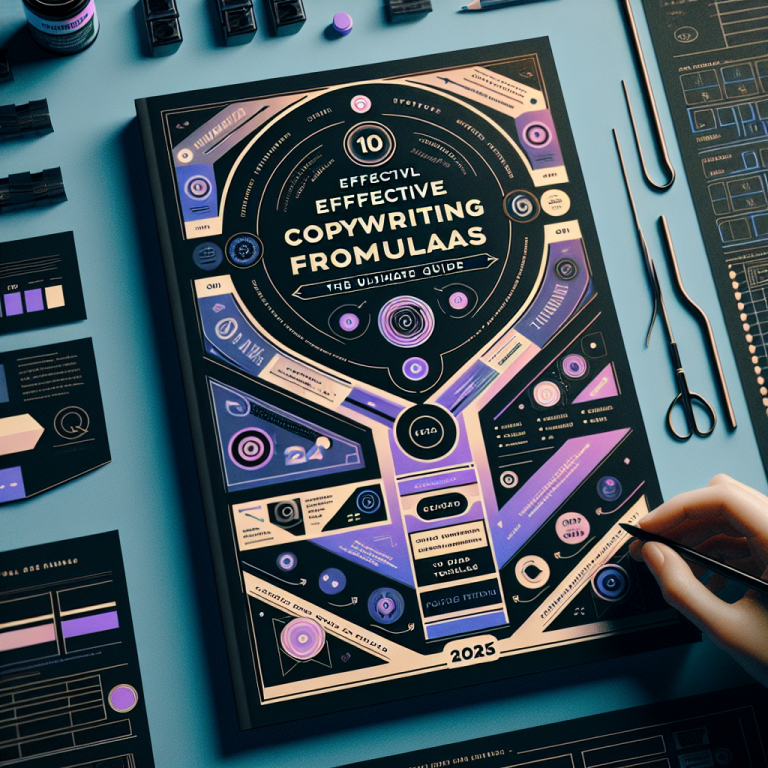The Ultimate Guide to Content Writing vs Copywriting: 7 Effective Strategies for 2025
- 1. Understanding the Core Differences
- 2. Crafting Goals and Messaging
- 3. SEO Optimization Techniques
- 4. Audience Engagement Strategies
- 5. Content Formats and Platforms
- 6. Measuring Success and Analytics
- 7. Future Trends and Tips for 2025
1. Understanding the Core Differences
What is Content Writing?
Content writing is primarily focused on producing informative, engaging, and valuable content that educates or entertains an audience. It includes blog posts, articles, eBooks, whitepapers, and more. The goal is to build brand authority, foster trust, and nurture long-term relationships with readers. For example, a comprehensive guide on renewable energy solutions showcases content writing’s role in establishing thought leadership.
In 2025, content writing is evolving with the rise of personalized content and interactive formats. It requires a deep understanding of audience interests and the ability to communicate complex ideas clearly. As a content creator, your job is to inform, inspire, and create a connection through your writing.
Knowing the differences between content writing vs copywriting helps marketers allocate resources effectively. While content writing aims to inform and educate, copywriting focuses more on persuasion and driving immediate action.
What is Copywriting?
Copywriting is designed to persuade and compel readers to take specific actions, such as buying a product, signing up for a newsletter, or clicking a link. Itâs often shorter, punchier, and filled with compelling calls-to-action (CTAs). Think of landing pages, advertisements, product descriptions, and email campaigns as prime examples of copywriting.
In 2025, copywriting harnesses advanced psychographic data and AI tools to craft highly targeted messages. Effective copywriters understand human psychology and use persuasive language to influence consumer behavior quickly.
While both content writing vs copywriting involve writing skills, their objectives and styles differ significantly. Recognizing these differences allows you to tailor your approach depending on your goals and audience needs.
2. Crafting Goals and Messaging
Setting Clear Objectives
One of the key distinctions in the ongoing debate of content writing vs copywriting is their respective goals. Content writing aims to inform and educate over the long term, often supporting brand positioning and SEO efforts. In contrast, copywriting is short-term focused, aiming to generate immediate conversions.
In 2025, successful content strategies combine both approaches seamlessly. For instance, a blog post (content writing) might lead into a persuasive product page (copywriting). Setting precise goals ensures your content or copy achieves expected resultsâwhether brand awareness or driven sales.
When planning your content, ask yourself: Is my goal to inform, entertain, or persuade? Clarifying this focus helps you craft the appropriate message and choose suitable formats.
Messaging Strategies
Effective messaging is at the heart of both content writing vs copywriting. Content writing relies on creating relatable, trustworthy, and valuable narratives, while copywriting emphasizes urgency, benefits, and clear CTAs.
In 2025, personalization and AI-driven insights enable marketers to craft hyper-targeted messages. Use data analytics to understand your audienceâs preferences, pain points, and buying behaviors, then tailor your content accordingly. For example, segmenting email lists allows you to send customized messages that resonate more strongly.
Remember, consistency in tone and clarity enhances your messaging effectiveness, whether you aim to educate or persuade.
3. SEO Optimization Techniques
SEO for Content Writing
In 2025, SEO remains critical for content writing, especially for blog posts and informational pages. Incorporating relevant keywords naturally, optimizing meta descriptions, and leveraging internal links enhance visibility in search engines. For instance, ranking high for ‘content writing vs copywriting’ increases organic traffic and authority.
Content writers should prioritize quality, relevance, and readability, aligning with Googleâs E-A-T (Expertise, Authority, Trustworthiness) principles. Strategically placed keywords, like ‘content writing vs copywriting,’ help search engines understand your contentâs focus.
Tools like SEMrush or Ahrefs can assist in identifying high-volume keywords and topics that attract your target audience effectively.
SEO for Copywriting
While copywriting is normally more conversion-focused, SEO still plays a vital role. Optimized copy ensures that landing pages and product descriptions rank well, driving targeted traffic. In 2025, integrating SEO with compelling copy enhances visibility without sacrificing persuasive quality.
Keyword placement in headlines, CTA buttons, and throughout the text increases click-through rates. For example, using phrases like ‘best content writing vs copywriting tools’ can target niche traffic effectively.
Balancing SEO with persuasive language remains a core skill for copywriters aiming to maximize both reach and conversions.
4. Audience Engagement Strategies
Building Trust with Content
Content writing in 2025 is all about building trust and authority. Sharing insights, data, and actionable tips positions you as a thought leader. For example, publishing case studies or data-driven articles encourages repeated visits and brand loyalty.
Engagement increases when content addresses real problems and provides solutions. Interactive elements like quizzes, polls, and comment sections foster community and participation.
Content that resonates on a personal level results in higher engagement metrics, such as time-on-page and social shares.
Driving Action with Copywriting
Copywriting aims to evoke emotions and prompt immediate responses. In 2025, smart use of storytelling, scarcity tactics, and social proof enhances engagement. For instance, limited-time offers or testimonials move prospects down the sales funnel efficiently.
Effective copywriting employs power words and compelling CTAsâfor example, “Join now and save 20%!,” which creates urgency and motivates actions.
Testing different messaging variations (A/B testing) allows marketers to optimize engagement continuously.
5. Content Formats and Platforms
Popular Content Formats
In 2025, diverse formats are integral to successful digital strategies. Blog articles, videos, infographics, podcasts, and social media posts cater to various audience preferences. Content writing often lends itself to in-depth articles and educational resources.
Copywriting thrives on short-form content like display ads, email subject lines, and product descriptions. The key is to adapt your message to fit each format while maintaining a cohesive tone.
Understanding the strengths of each format helps you effectively communicate your message and reach your target audience.
Platform Considerations
Different platforms demand customized content. For example, LinkedIn favors professional articles and detailed guides, aligning with content writing strategies. Conversely, Instagram and TikTok prioritize quick, eye-catching copyâideal for short copywriting snippets.
In 2025, leveraging platform-specific features, such as Instagram Stories or TikTok Shorts, can elevate your content’s reach and engagement. Responsive content strategies ensure your messaging resonates across all channels.
Proactive platform research and audience analysis remain vital for tailoring your approach and maximizing ROI.
6. Measuring Success and Analytics
Metrics for Content Writing
Success in content writing is typically gauged through metrics like organic traffic, bounce rate, social shares, and time on page. Tools like Google Analytics offer deep insights into how content performs over time.
Tracking keyword rankings for your target phrasesâsuch as ‘content writing vs copywriting’âhelp you assess SEO effectiveness in 2025. High rankings correlate with increased visibility and authority.
Furthermore, engagement metrics like comments and backlinks indicate content relevance and quality.
Metrics for Copywriting
Copywriting success focuses on conversion rates, click-through rates, and ROI. A/B testing different headlines or CTAs helps optimize performance. For example, testing two headline variants on a landing page can reveal which generates more sign-ups.
Using tools like Hotjar or Crazy Egg provides heatmaps that show user interaction and help refine copy for maximum impact. Clear goal-setting ensures measurement aligns with your overall marketing objectives.
Regular review of these analytics guides your ongoing strategy, ensuring continuous improvement.
7. Future Trends and Tips for 2025
Emerging Technologies
In 2025, AI-powered writing tools will become even more sophisticated, assisting both content writers and copywriters. Natural language processing (NLP) enables generation of high-quality drafts, freeing up time for strategic thinking. For instance, AI tools can help craft personalized email sequences or generate in-depth articles efficiently.
Voice search optimization is also gaining traction, emphasizing conversational keywords. Incorporating voice-friendly phrases into your content and copy is vital for remaining visible.
Staying updated with these technological advancements ensures your writing stays relevant and competitive.
Practical Tips for Success
Always prioritize audience needsâwhether youâre creating content or copy. Tailor your message, format, and platform choices accordingly. Regularly update your skills by studying industry trends and analytics.
In 2025, integrating storytelling with data-driven insights leads to more compelling and effective writing. Collaborate with design teams to incorporate Visuals that complement your message and enhance user experience.
Ultimately, mastering the nuances of content writing vs copywriting and knowing when to use each approach will keep you ahead in the digital marketing game.
Conclusion
Understanding the differences between content writing vs copywriting is essential for crafting effective marketing strategies in 2025. Both disciplines have unique roles but are equally vital in building brand authority and driving conversions. By implementing these 7 strategies, you can leverage the strengths of each to maximize your contentâs impact and achieve your business goals in the coming year.
Frequently Asked Questions
- What is the main difference between content writing vs copywriting?
- How can I improve my skills in content writing vs copywriting in 2025?
- Which is more suitable for social media marketing?
- Can I combine content writing vs copywriting in a single campaign?
- Why is understanding content writing vs copywriting crucial in 2025?
Content writing aims to inform, educate, and build trust with the audience over the long term, while copywriting focuses on persuading readers to take immediate action, such as making a purchase or subscribing.
Stay updated with industry trends, learn SEO best practices, and practice adapting your tone and style for different formats and audiences. Utilize AI tools and analytics to refine your approach continuously.
Both are important: content writing creates valuable educational or entertaining posts, while copywriting is used for compelling ads and quick calls-to-action. Balancing both enhances your social media strategy.
Absolutely! A well-rounded campaign integrates informative content with persuasive copy, guiding the audience along the journey from awareness to action.
Knowing the differences allows you to tailor your strategies effectively, ultimately increasing engagement, conversions, and ROI in a competitive digital landscape.








